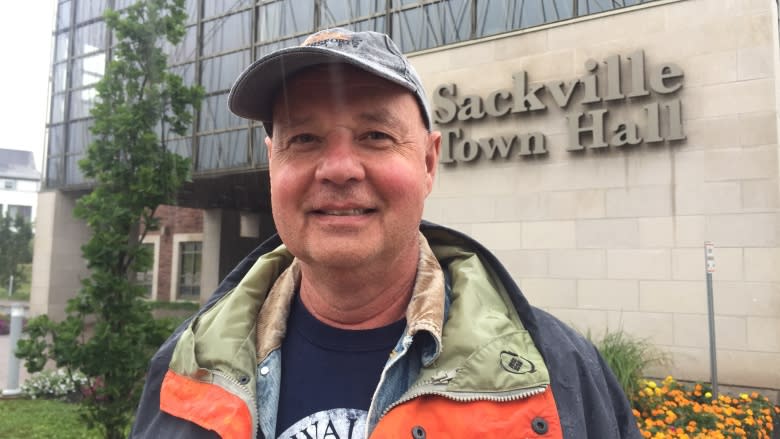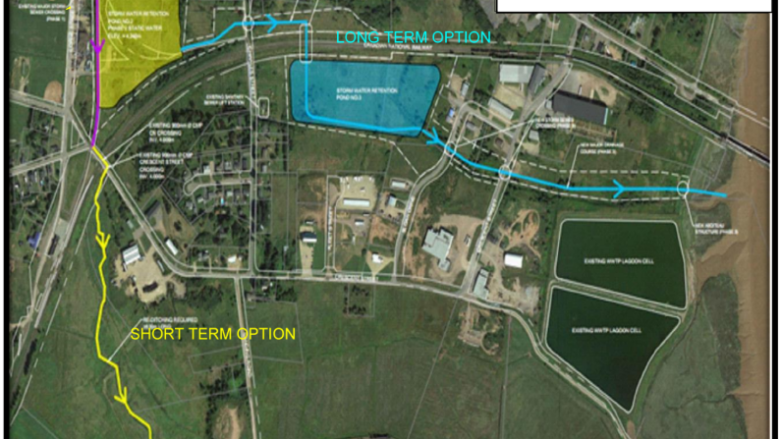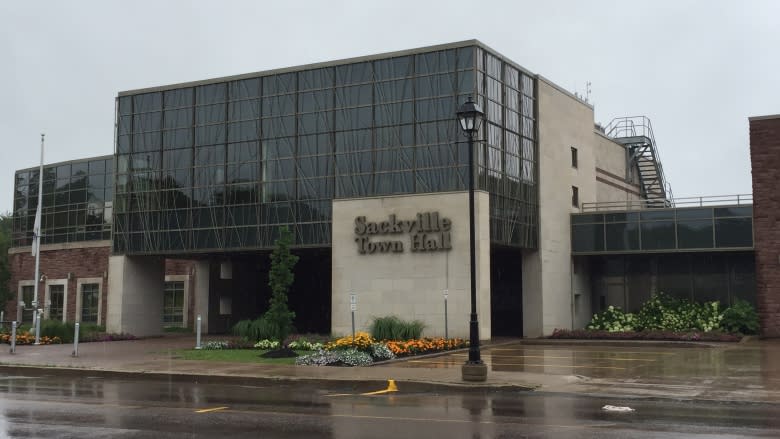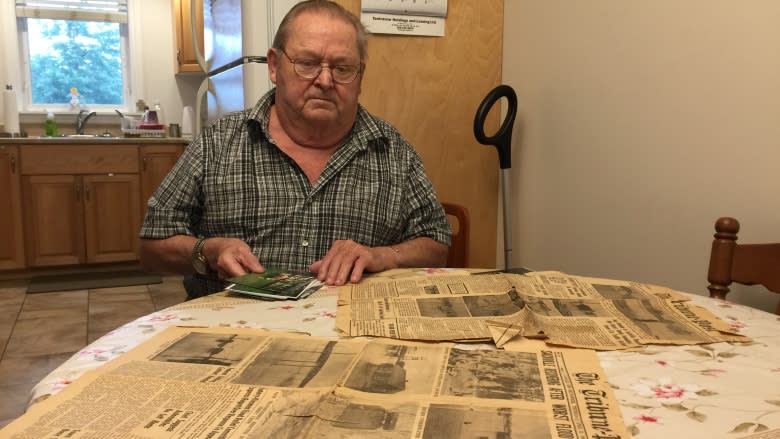Sackville considers short-term flood fix or costlier long-term plan
The mayor of Sackville, N.B., says the town must decide whether to use a cheap short-term fix for persistent downtown flooding or try to find funds to cover its original plans after the cost of the work nearly doubled to about $6 million.
"It's a difficult choice," Mayor John Higham said. "We can't make [an extra] $2.9 million just show up, and the town can't afford to do it alone."
He said choosing a short-term solution could delay the town's access to funding for a longer term fix in the future.
The town hopes to address flooding that occurs when heavy rain coincides with a high tide in the Lorne Street area.
The street has several businesses, a legion and park space, though previous floods have also affected nearby homes.
The town has proposed building holding ponds to collect storm water. That water would drain at low tide through a series of new ditches and culverts under the CN rail line and through an industrial park.
The project would also involve reworking a dike and installing an aboiteau along the Tantramar River, which allows water to go out, but not flow back in.
But the mayor said the project changed as it went through environmental review, and included a higher dike and larger aboiteau.
When the tenders came back this summer, the lowest bid was nearly double the $2.9 million available from the federal, provincial and municipal governments.
That left town officials scrambling to figure out what to do.
Town council voted 5-3 last week to spent up to $105,000 more for Crandall Engineering Ltd. to redesign aspects of the plan.
Councillors who voted against the move expressed dismay the town would pay additional fees to Crandall Engineering, the same firm which developed the plans that now may not be feasible.
Crandall will consider what the mayor describes as a short-term fix, using an old quarry as a holding pond and a different drainage route.
However, Higham said the original plan will likely be necessary in the future due to climate change and rising sea levels.
Plan questioned
But some town residents question whether the more extensive work is really the best way to tackle the flooding problem.
Percy Best, who owns property near Lorne Street, has closely followed the town's plans for the area and regularly attends council meetings.
"It seemed to get into their head that this was the way to go and they've never varied from it," Best said. "It's an extremely expensive plan."
Best and his partner Sharon Hicks points to a Stantec Consulting Ltd. analysis of the issue, included with tender documents, that found problematic soil conditions requiring specialized equipment.
As a result, Best advocates for what he calls a simpler approach: Cleaning out existing drainage ditches and using a route straight south through flat marshland to a new aboiteau.
But a Crandall Engineering report, filed as part of the environmental approval process, states the route it selected is the shortest and that "no other alternative is considered to be feasible."
History of flooding
Edgar Estabrooks lived on Wellington Street, which connects to Lorne Street, for decades. His home often flooded when water collected along Lorne Street.
The town had a water pumping station along the street that helped deal with water in the area until the machinery was removed for refurbishment after a 1962 flood and not replaced, Estabrooks said.
"Since then, they've had nothing but trouble," Estabrooks said about flooding that affects the Lorne Street area, pointing to photos of his home surrounded by water at different times.
Two years ago, he moved to a home at a higher elevation.
"I'm glad I am where I am now," he said. "It can rain all it wants to, it's the other guys who have to suffer now."






